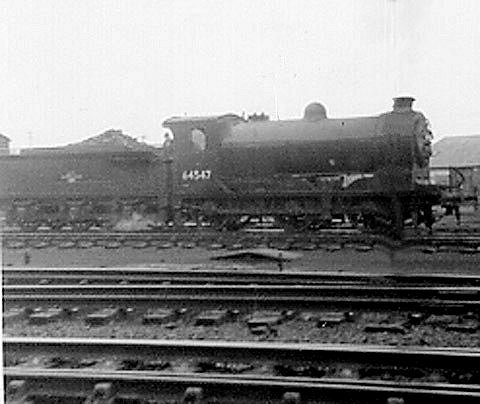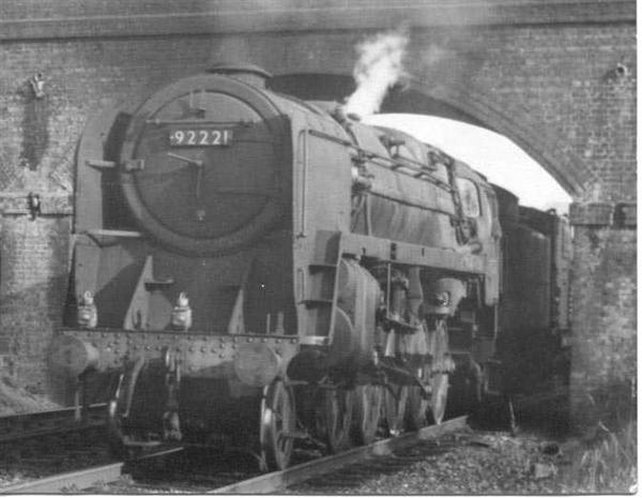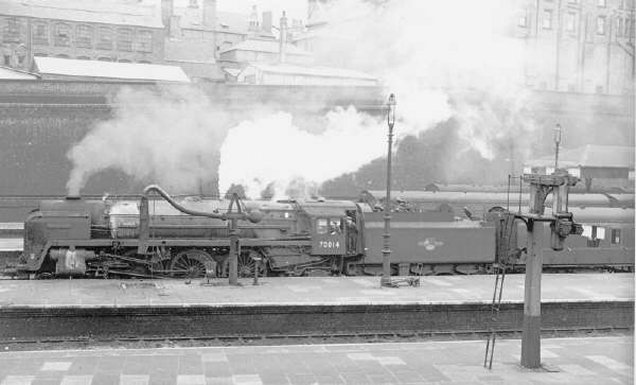  |
  |

A Production for Riyan Productions by B.L.Cann
Our thanks go to Mr. I. Fyvie, The Watercress Line, Mr. T. Knowles, Mr.S. Smalley, The North Norfolk Rly., Severn Valley Rly., Mr.Chris Adams and countless others for their assistance in this production.

Through the course of railway history, all manner of wheel arrangement has been deployed on freight loco design. Without any shaddow of doubt, the most numerous has been the 0-6-0, which could be found anywhere on the British railway system. As freight traffic grew, it became obvious that more powerfull locos would be needed, and this gave rise to a large number of designs in order to strike a balance between tractive effort and horsepower output, as the practice of double heading led to extravagant inefficiencies.

The 0-8-0 was a favoured choice for Webb of the L.N.W.R., who produced these firstly as a compound engine (using exhausted steam from the high-pressure cylinders to power the low-pressure ones). This proved to be most gratifying in terms of efficiency, and was accepted as the standard for these spartan but powerfull machines. Several varieties of this design were constructed, featuring either simple or compound designs, and proved to be a sure-footed slogger with very heavy trains.
On a few occasions, the "D" class were employed on passenger trains too; and handled them without disgrace. The only failings with the design were that the locos would try to straighten the track (to the consternation of the Permanent Way staff), and the cabs were quite spartan with earlier models. Latter versions fitted with superheating gave rise to the nickname of "Super - D" as the class was generally known.
The Beyer Peackock Co. produced an unusual articulated loco for the purpose of heavy freight, but these were less than ideal on the maintenance side. Though these giants of steam managed tremendous loads, the problems of repairing them made the design less than favourable with railway heirarchy. This problem was resolved by the emergence of the 2-8-0 and 2-10-0 Austerity class locos, which were the fore-runners of the standard B.R. classes by Riddles.
. The L.N.E.R. produced the V2 to answer a specific problem:- namely express freight (for perishable goods such as Grimsby fish trains) as time was of the essence for fresh produce. Regretfully, only one of these 2-6-2's made it's way into preservation and is now at the York Railway Museum.
The Austerity classes were primarily built to a budget:- both concerning build cost and running cost of these locos, with the design kept as simple as possible to allow ease of repair and maintainance by lesser skilled fitters. Many of the class found their way overseas at the hands of the British Army, along with a large amount of Stanier 8F's (many of which remained in service long after their B.R. counterparts had been consigned to the scrap yards).
R.A.Riddles was not yet finished, but went on to produce the B.R. Standards and 2-10-0's, nicknamed "Spaceships" due to the great amount of space between the boiler and the main-frames. Here was a classic freight locomotive, with an awesome amount of power available, pulling trains in excess of 1000 tons, and a surprising capability of sustained high speed running. So much so, that the 9F's were utilised on passenger duties during busy periods of holiday traffic.

It was unfortunate, therefore, that the 9F design had come too late in the day; the Beeching axe was swinging zestfully, and the dieselisation plan was gathering momentum rapidly. Within fifteen years, the new Standard classes were being de-commissioned wholesale, and with them railway lines and their workers were also being lost. Road transport had taken over the mainstay of freight traffic, and economies had to be envoked.
Preservation News
Our friends at Loughborough Central are remarkably busy at this time. Along with several other locos in a part stripped condition, Britannia class 70013 Oliver Cromwell is being given a full recondition. It is hoped that this loco will be allowed to run in on G.C.R. metals before moving homewards after completion.

Britannia Class 7P 6F on the G.C.R.
| © RIYAN Productions |